Bonaire News
Getting your PADI Open Water diving certificate on Bonaire, all tips and info!
July 15, 2023
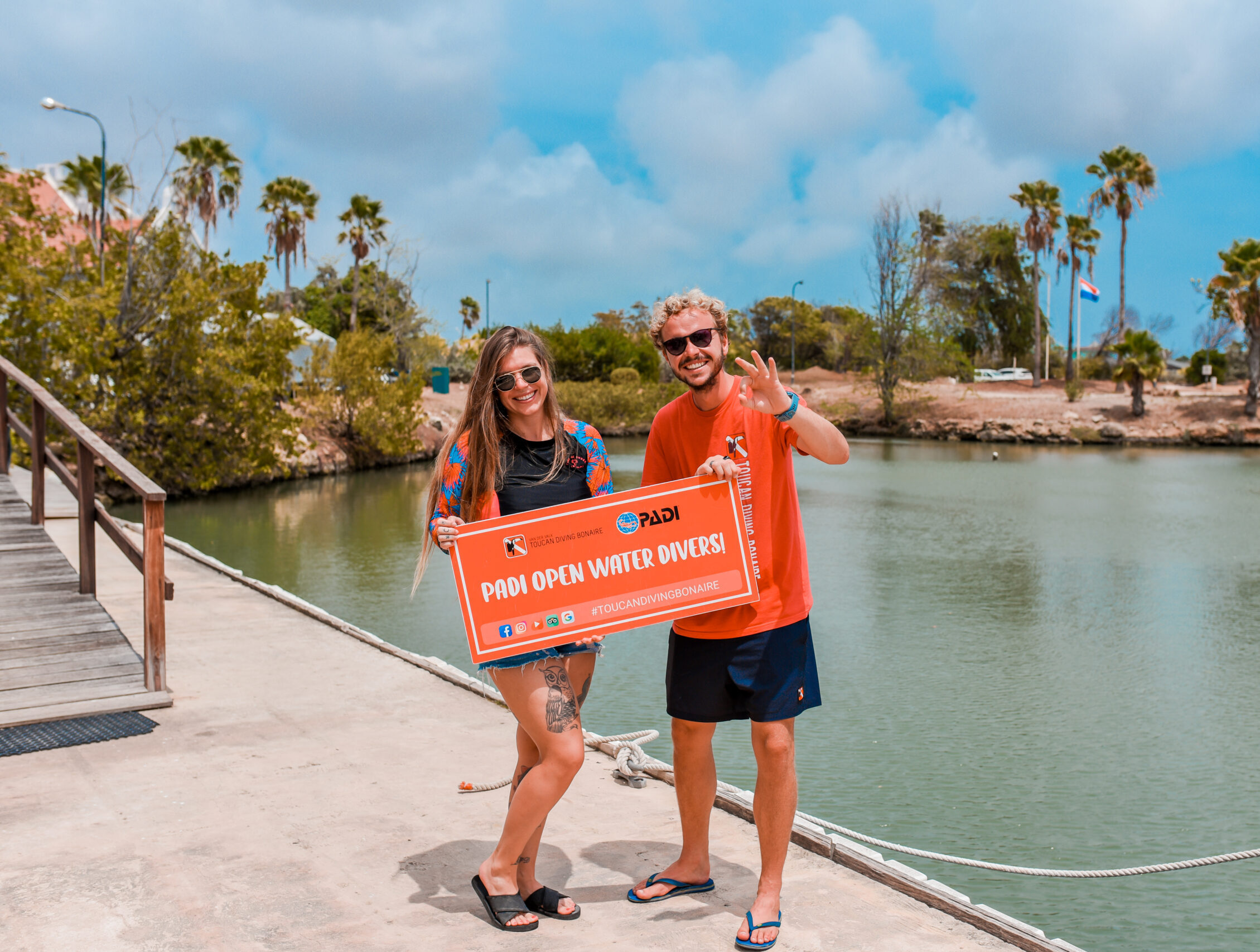
Getting your PADI Open Water diving certificate on Bonaire, all tips and info!
Travel Blogger Kiki Multem explores Diver's Paradise and discovers new depths
As a travel blogger, Kiki Multem has been a fan of snorkeling for years and enjoys the magical ocean life discoveries every time. As a result, diving has been high on her bucket list for some time, because she’s very curious to explore sea life deeper into the ocean. Kiki will tell you all about her experience and encounters while getting her PADI Open Water on Bonaire!
From beginner to ocean explorer
After an introduction dive in mid-2022, I got the hang of it and started looking for a good place to get my PADI Open Water. When I received an offer to get my diving certification at the invitation of Tourism Corporation Bonaire (TCB), the only possible answer was, of course: YES!!
Bonaire is called Diver’s Paradise and after completing my course I completely understand why! Bonaire is an ideal place to get your diving certificate because many instructors are fluent in various languages. Besides English, they also speak German, Spanish, Dutch and Papiamentu. The coral reef is beautiful and you will encounter countless fish and other marine life during the course.
Why get your PADI diving certification on Bonaire?
Getting your first diving certification on Bonaire is an excellent idea! Why? Bonaire is home to some of the worlds’ most beautiful dive sites and is therefore called Diver’s Paradise for a reason. When you learn to dive, you’ll see so much of the island’s beautiful underwater world. You will encounter all kinds of colorful fish, turtles and other marine life. And if you are lucky you will also see dolphins, manta rays and sharks swimming by. On my bucket list were the lion fish and a seahorse, I desperately wanted to spot those two. The lion fish is not everyone’s favorite, because they reproduce very quickly, have an enormous appetite, and are therefore quite harmful to the coral and other marine life. But the appearance of this fish is in my opinion breathtakingly beautiful, which made me want to see one.
The coral reef around Bonaire is still in excellent condition. This is partly because Bonaire is located outside the hurricane zone and the coral is not affected by violent storms or severe weather. In addition, the coral is well protected by clearly marked dive sites. Yellow stones are used at all official dive locations to mark entry and exit ways, preventing people from stepping on the coral.
Advantages for first time divers on Bonaire
Bonaire has about 90 dive sites, half of which you can reach directly from the shore. So you don’t have to get on a boat first. It is especially ideal for your first time diving, because you can walk straight into the water. It is also super convenient that there are diving instructors that speak different languages. This way you prevent miscommunication and you can be sure that you understand everything clearly. I received private lessons from instructor Bram at Toucan Diving which I highly recommend. Bram has a lot of patience and helps to show you the beautiful underwater world, in addition to teaching you all the course requirements and exercises.
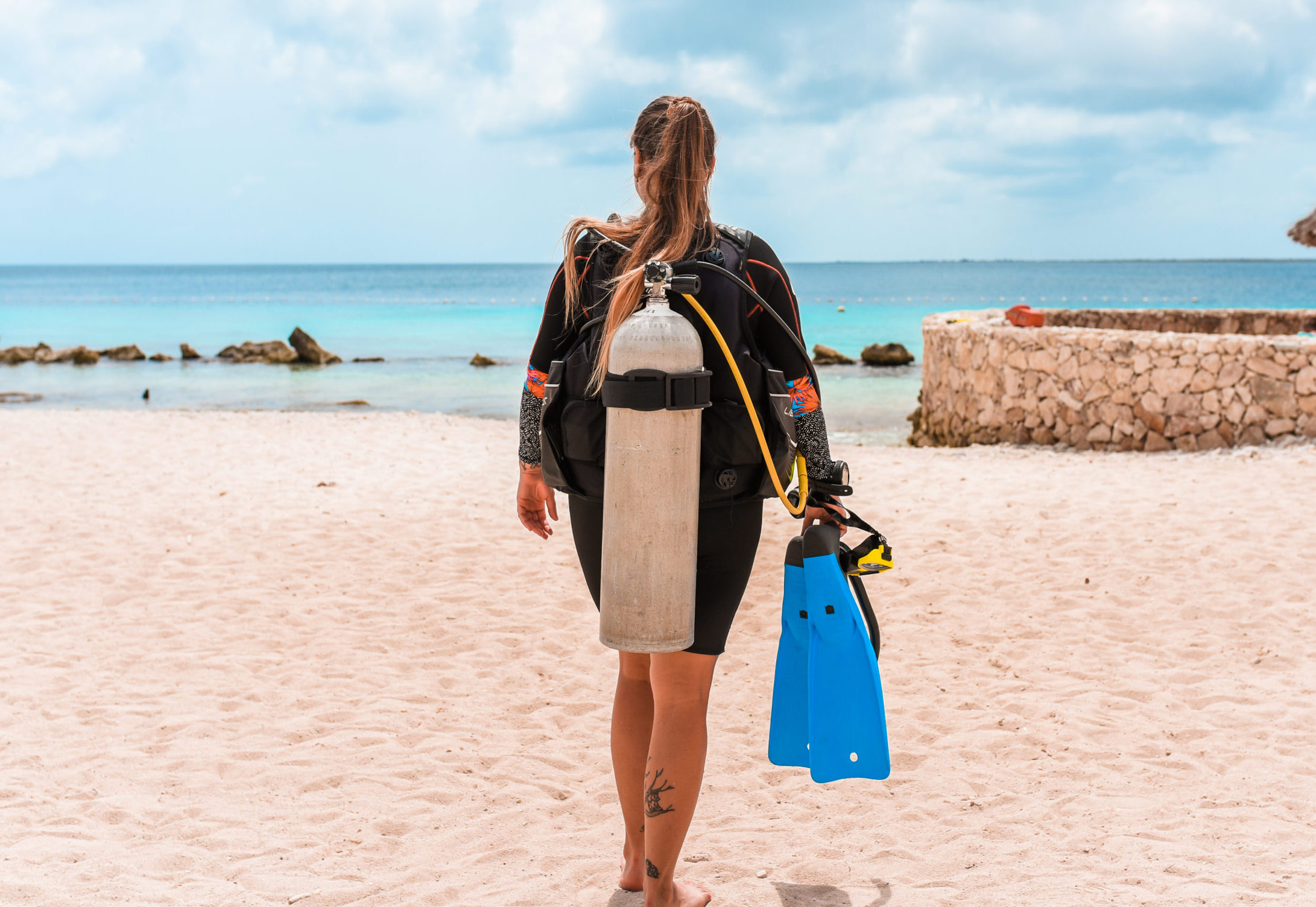
How does the PADI Open Water course work?
If you want to get your PADI Open Water diving certificate, you will be busy for three to four days. Exactly how long it takes depends on the diving school you choose and how they plan their courses. Some plan several dives in a day, which will get you done faster. To get your diving license you have to complete a theory part and a practical part.
Theory part
The theoretical part of your PADI Open Water course consists of watching videos, answering questions based on the videos and taking an exam. Usually you can choose to do this in your own time on the PADI website. I opted for an e-learning course so I could do it at home, at my own pace and divide it over several days. I was really afraid it would be difficult, but it’s not. All it takes is a lot of reading so take your time! You can also choose to take a classical course. Then you will be placed in a room with other students to watch all the videos at once. There are five parts to complete and the course covers all things diving. From learning about your gear to understanding water conditions. Most questions are multiple choice and easy to answer. This will take you about 3 to 4 hours in total.
Practical part
Once you have completed all parts of the theoretical part, it is time to move on to the practical part of the course. Depending on your diving school, you may take the exam a bit later, for example after the first few dives. This depends on the planning of your diving school.
Then it’s time to practice using your scuba gear, exciting! First you will adjust your equipment together with the other students. Your diving equipment consists of fins, diving mask and snorkel, wetsuit, weights, dive computer and a BCD (buoyancy Control Device). You then hook up your oxygen bottle and mouthpiece to the BCD. Your Open Water course instructors will patiently explain several times how everything works and how to get the equipment ready for diving, until you can do it yourself. You will then practice in shallow water near the shore. You start at a depth of 6-10 feet (2-3 meters), so if something happens or you do not feel comfortable, you can immediately go back up.
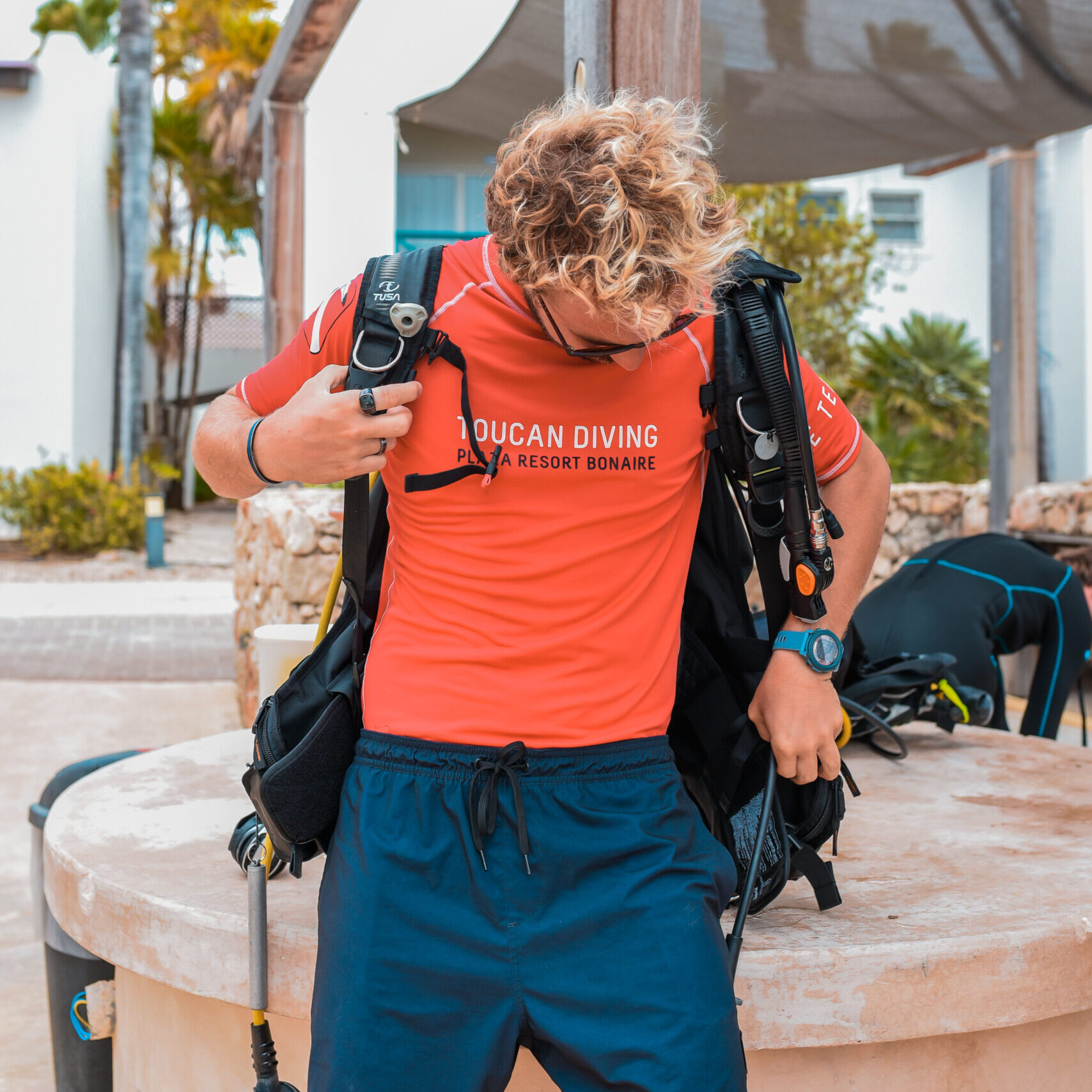
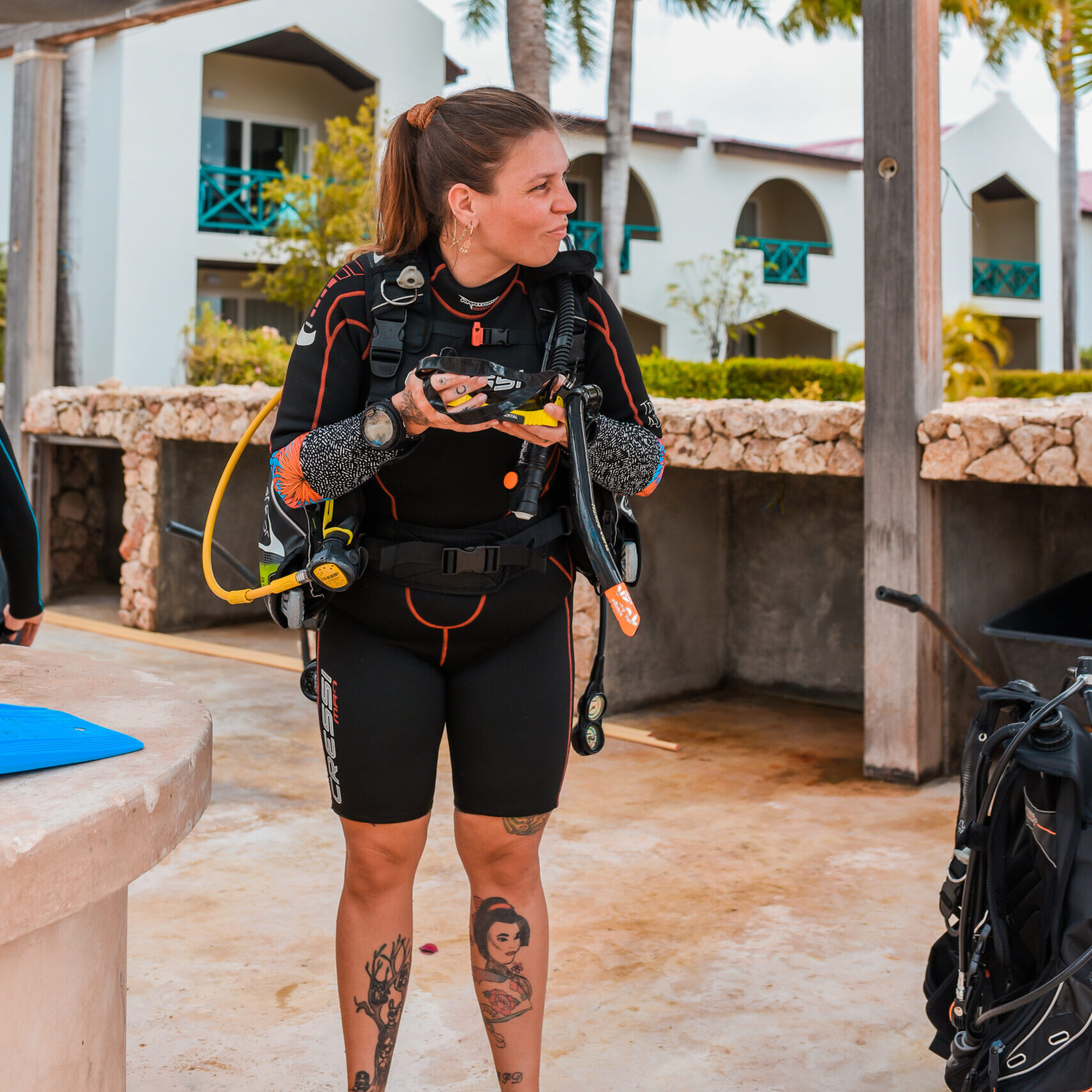
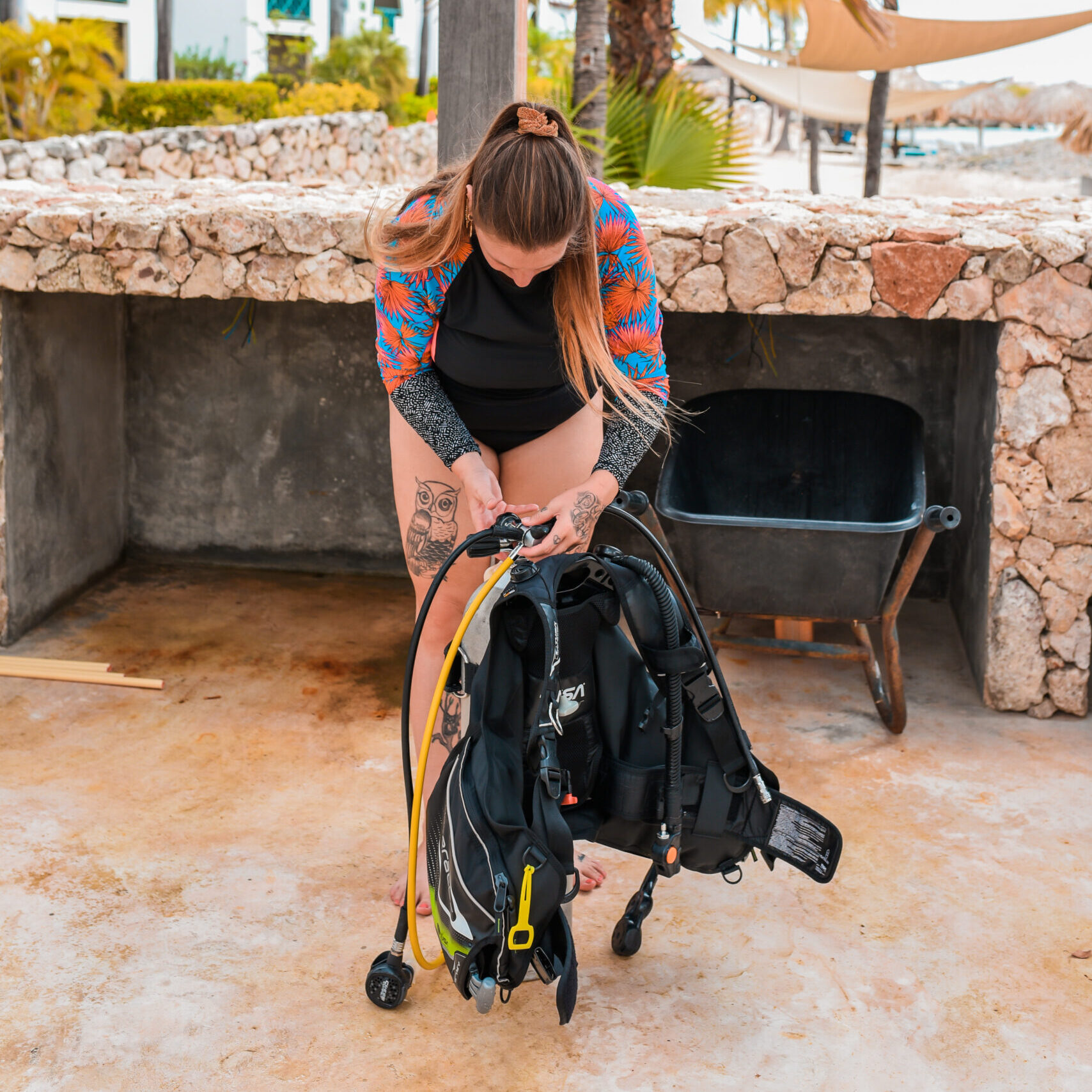
During this first dive you will become familiar with the material and you will have to perform certain skills. These skills consist of a series of exercises that you must master, otherwise you will not be able to complete the course. For example, you are going to take off your diving mask underwater and put it back on, and you have to take off the mouthpiece for a few seconds. This all sounds very exciting, but it’s not too bad. Make sure you stay calm to complete the exercises properly and slowly.
Swimming back after my first diving exercises I already saw a lion fish. I felt so lucky! In shallow water, during my very first practice there it was – my bucket list fish!!! I also saw the Christmas Tree Worm. This worm often sits on coral and carries two Christmas trees on its back, go check it out on Google. You will also work with hand signals, so you can indicate to your fellow students and instructors that everything is ok and how much air you have left. I will never forget the hand signal for lion fish after this day. 😉
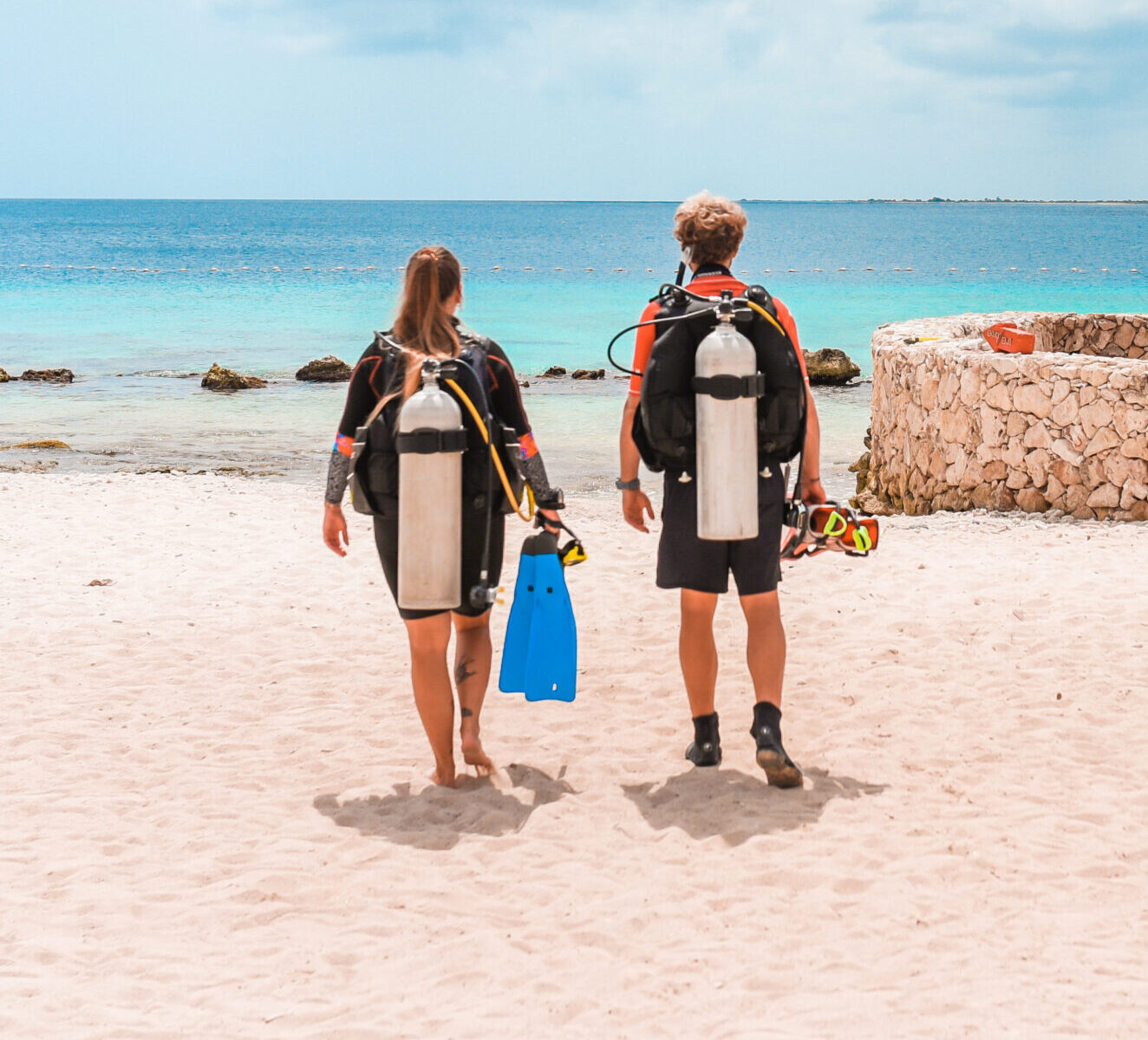
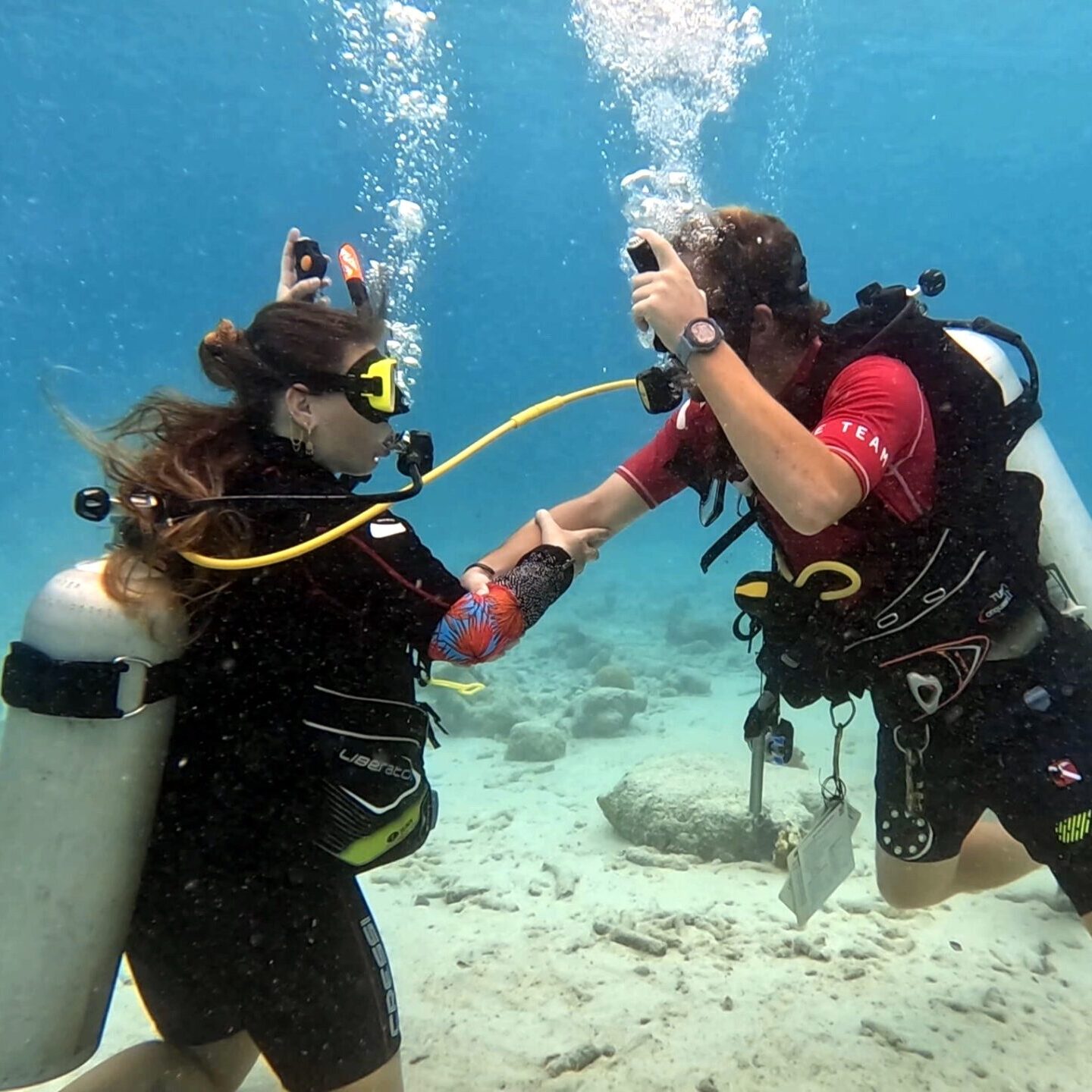
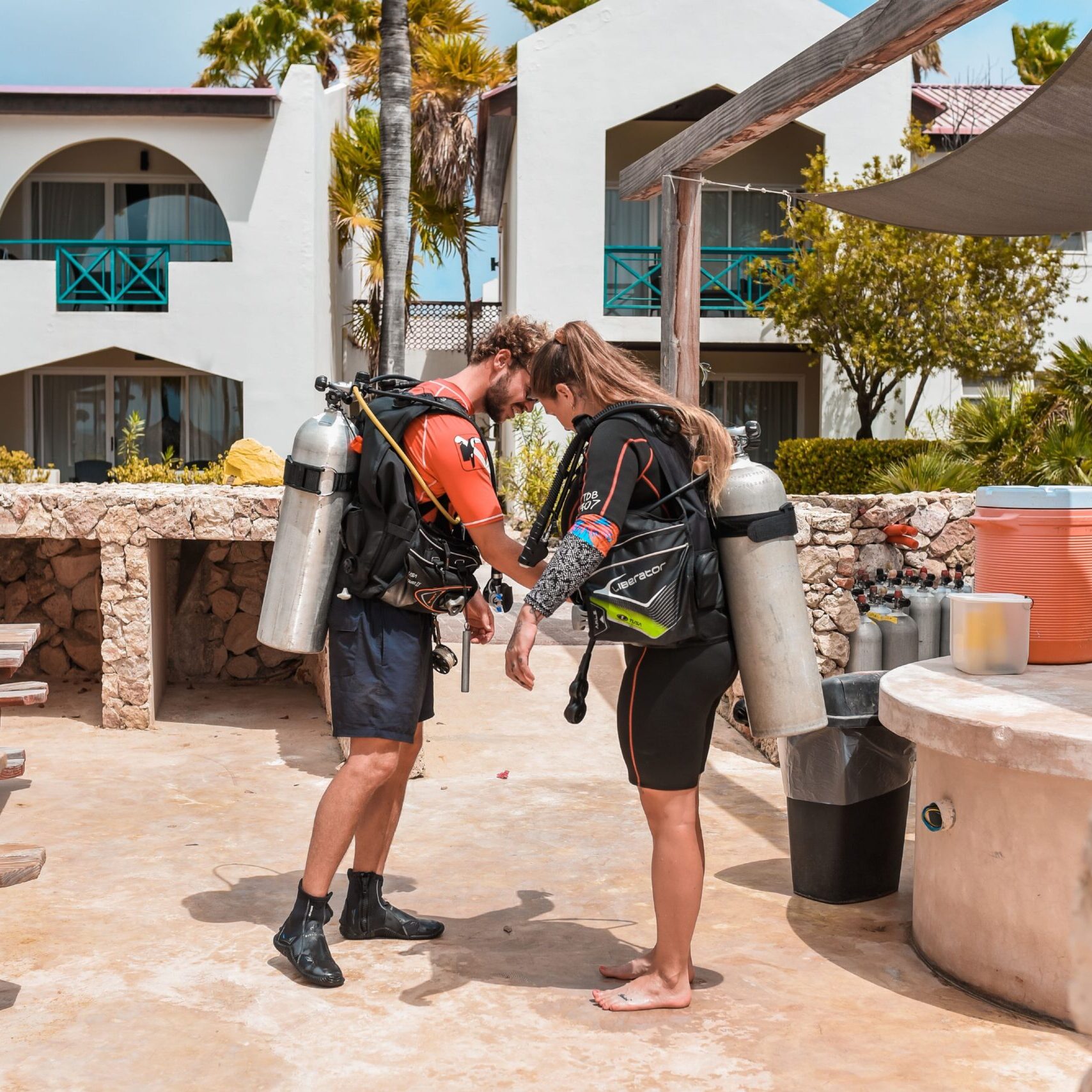
The first real dives
When you’ve practiced in the shallow water, it’s time to dive in the deeper waters! You’ll make a total of four dives, at a depth of 40 to 60 feet (12 to 18 meters). During these dives you will have to perform a number of skills, but they are also partly fun dives as you will spot all kinds of beautiful marine life. You will be assigned a buddy who will monitor you underwater. My personal dive instructor Bram of Toucan Diving was my buddy. You regularly gesture to each other how things are going and whether you still have enough air. During these dives you will encounter so many beautiful fish and other animals.
At the diving school we heard everyone talking about a special Frogfish and of course I wanted to see it. I didn’t have to tell Bram twice because after a few minutes of swimming he had already found the Frogfish. And you will never believe this, but after the very last course dive we also spotted a seahorse! I still can’t believe it myself that I got to see all these amazing animals during my diving course. After completing four practice dives and taking the exam, you can dive to a depth of 60 feet (18 meters) and will officially receive your diving certificate!
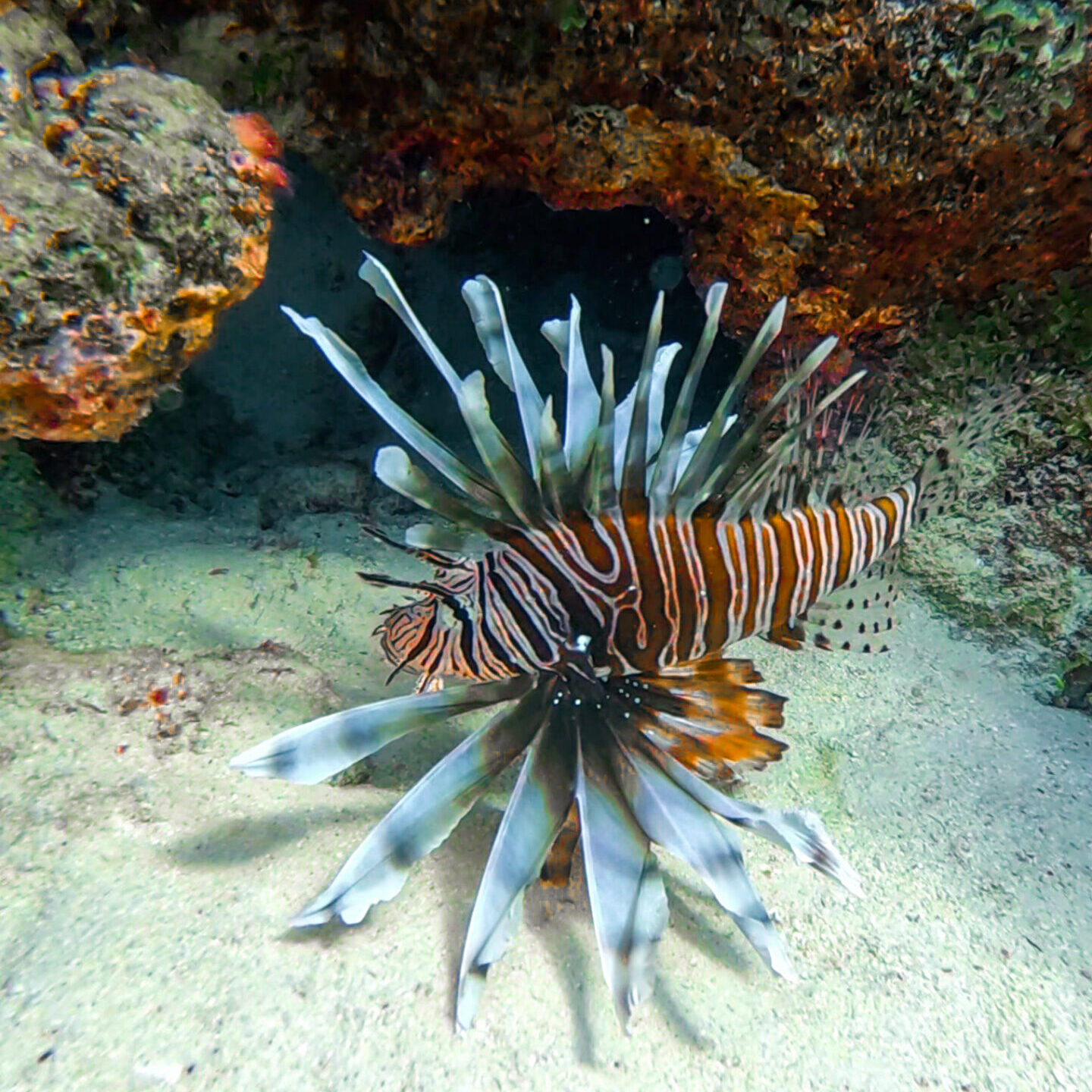
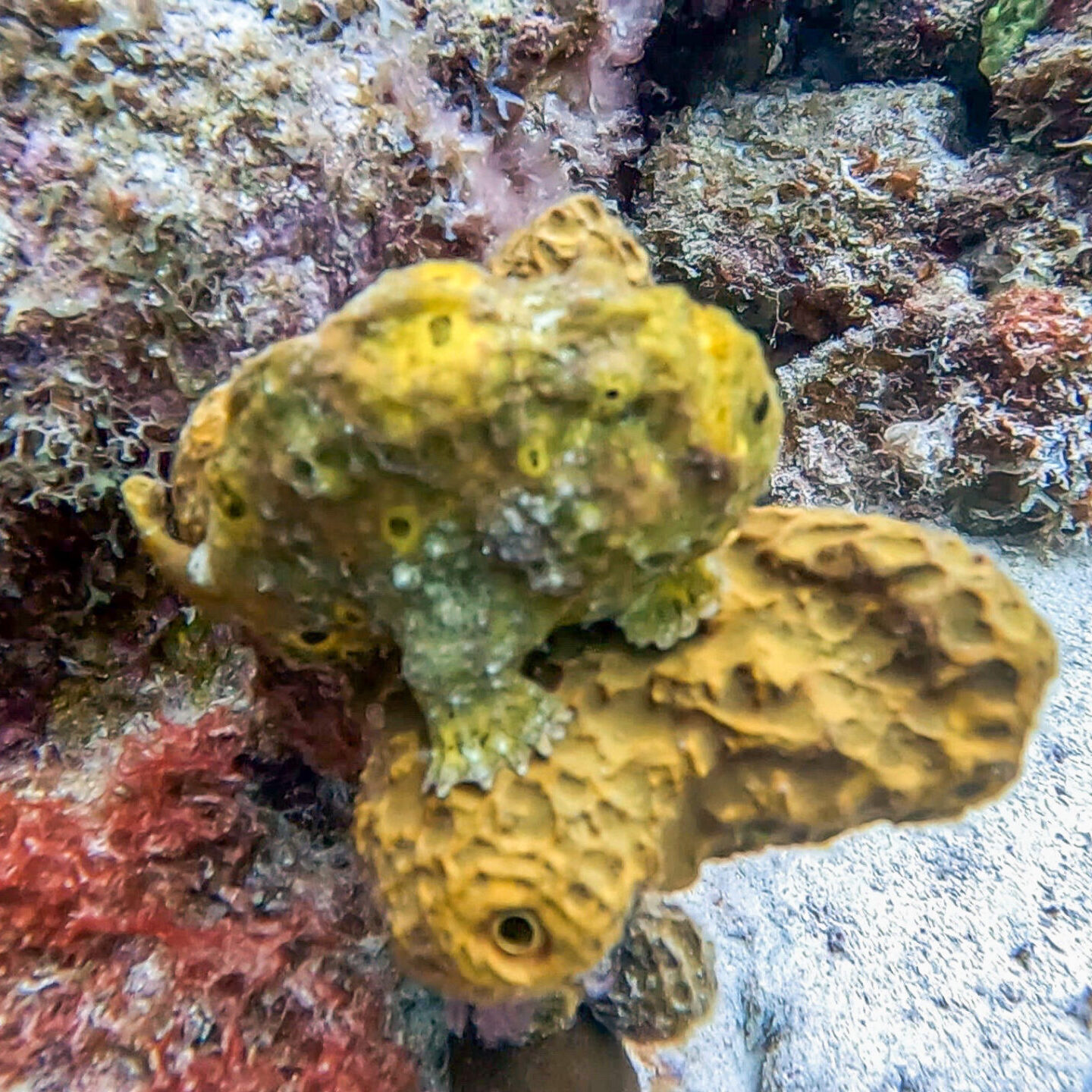
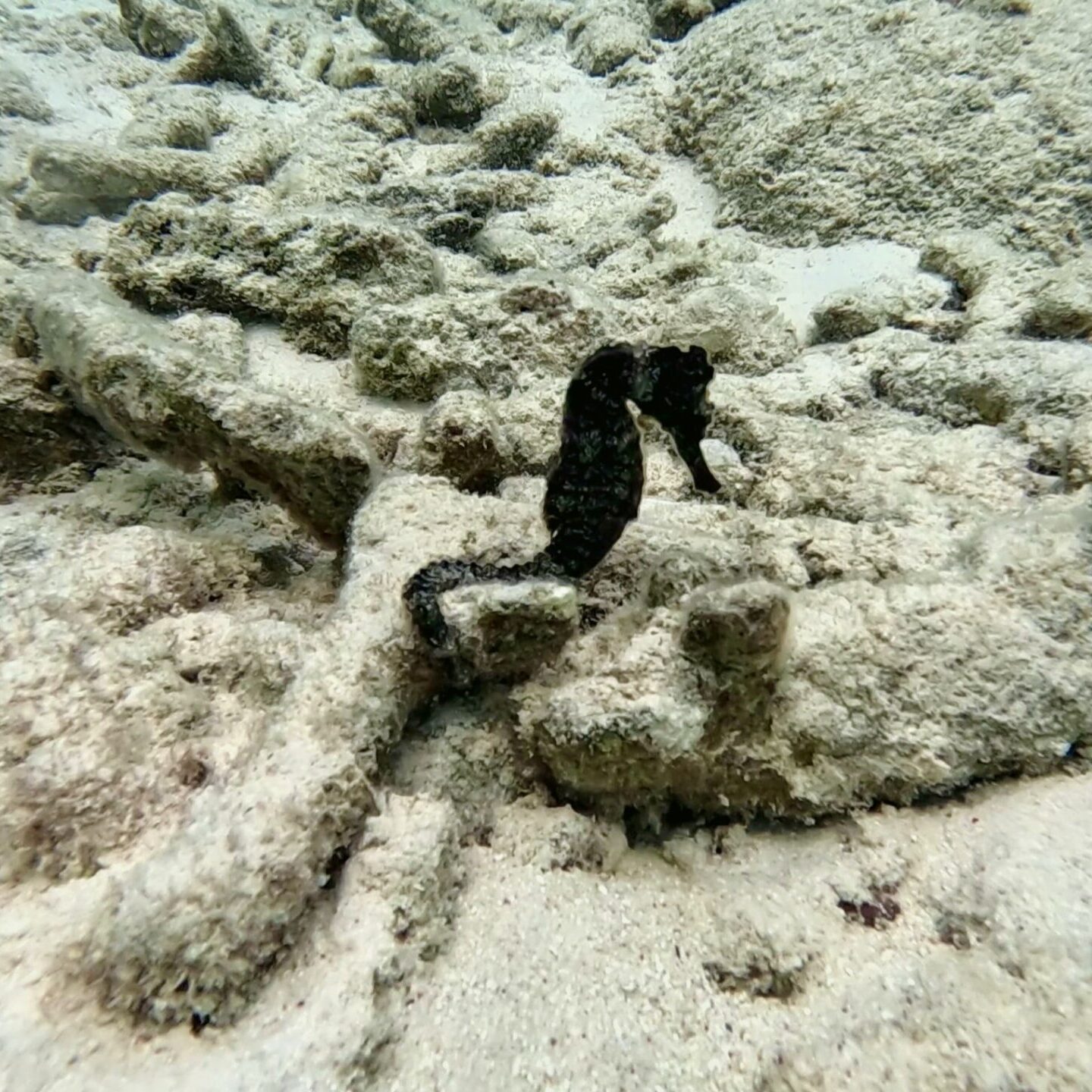
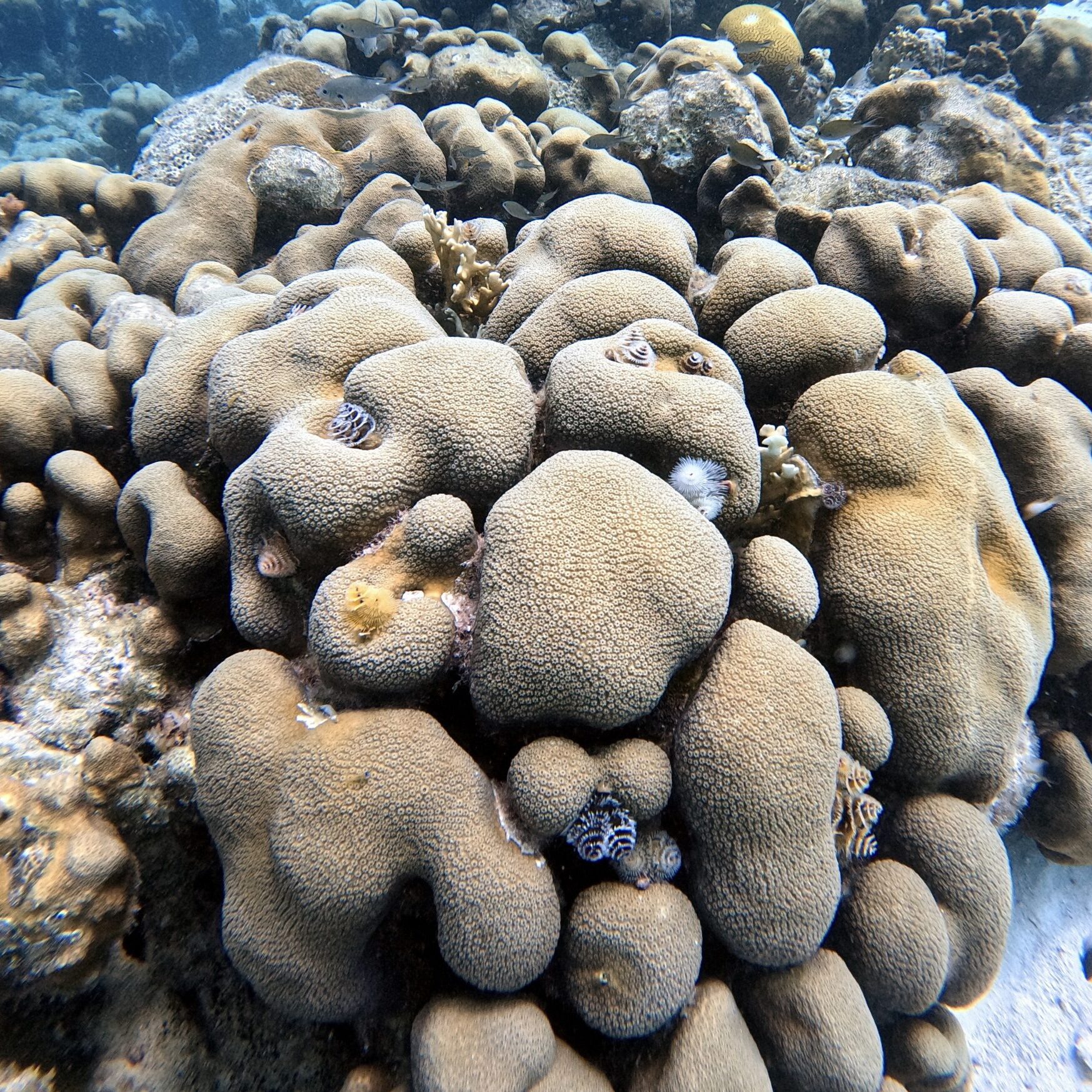
How much does it cost to get PADI Open Water certified?
Getting your PADI scuba certification is an investment, but once you get it you can dive all over the world for a lifetime. It’s definitely worth it in my opinion. How much it costs depends on the location where you are going to dive. I got my PADI Open Water at Toucan Diving and it costs $475. On average, getting your diving license on Bonaire will cost between $400 and $500.
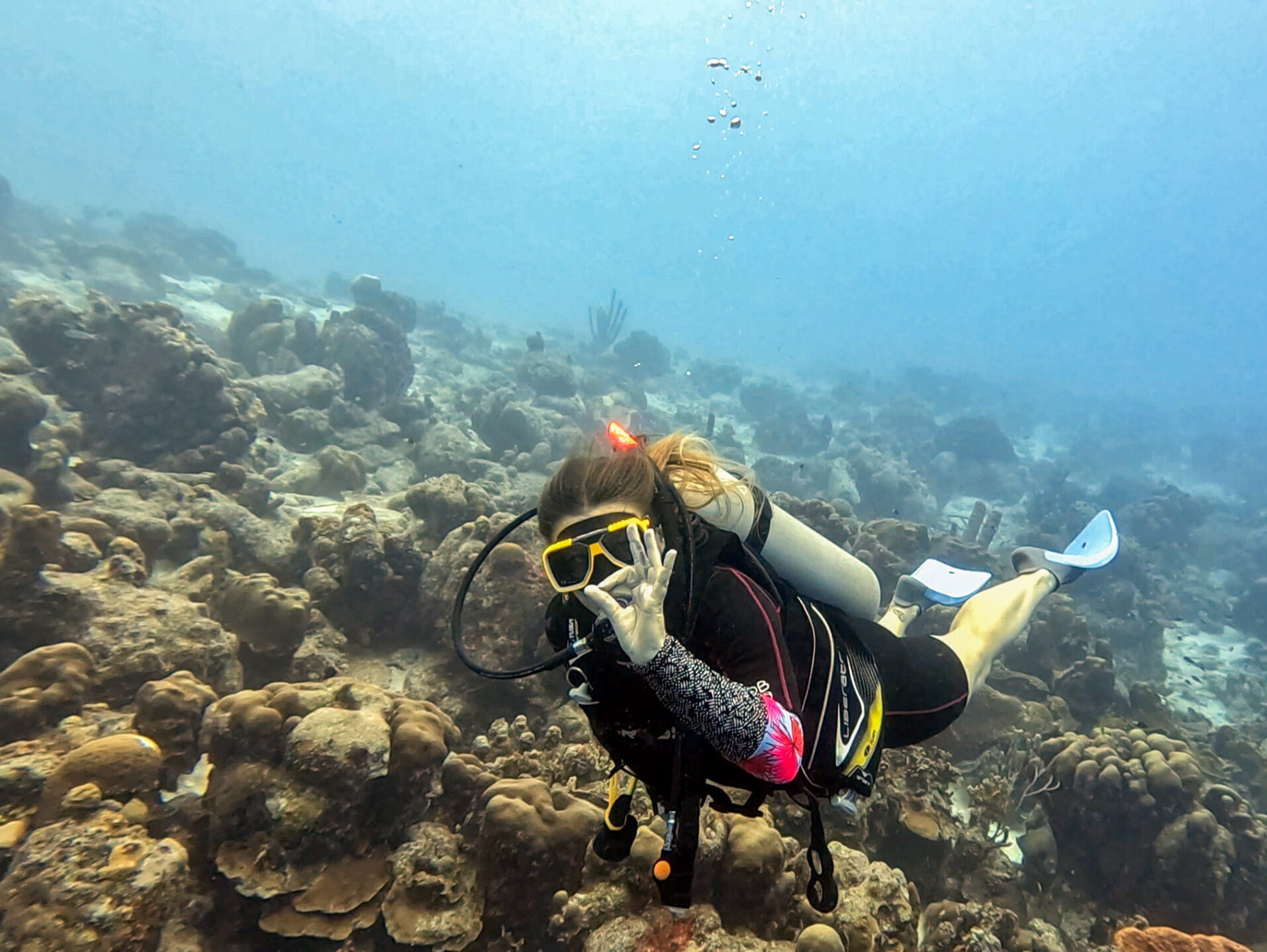
Getting PADI Open Water: What to look out for
When you want to get your PADI Open Water abroad, you have to pay attention to a number of things. It is important to choose a good diving school. Do your research on dive centers online, read reviews and ask for experiences from other travelers before making a decision. Once you are on location, it is also good to check whether the diving equipment of the diving school still looks good. Don’t you see any cracks, isn’t it worn out? Make a good choice and do not choose a diving school just because it is the cheapest. Obtaining your diving license costs money, but you also want to do it in a safe way that you feel comfortable with. If after reading this article, I have convinced you to take lessons with Bram at Toucan Diving Bonaire, please give him my best 🙂
You got your PADI diving certification! Now what?
How cool! You obtained your PADI Open Water diver certification. You will receive a digital diving pass, which you can show when taking future dives so that the diving school knows that you have your diving certificate. With your PADI you can dive anywhere in the world. In order not to lose knowledge, it is always recommended to dive at least every six months. If it has been longer than six months, you can first do a short refresher course. If you’d like to dive some more, follow-up courses such as the Rescue Diver or the Advanced Open Water are available.
Final conclusion
I highly recommend everyone to start diving. I am extremely happy and grateful for the opportunity I received from TCB and Toucan Diving to get my PADI Open Water on Bonaire. The marine life here is beautiful and there is something new to see on every dive. From small fish to rays and from lion fish to seahorses. I have now bought a book in my local dive shop with all the fish depicted in it, so I can look up exactly which fish I have seen after every dive. Do you want to share your own diving experience with me or do you have any questions? Feel free to message me on Instagram @kikimultem
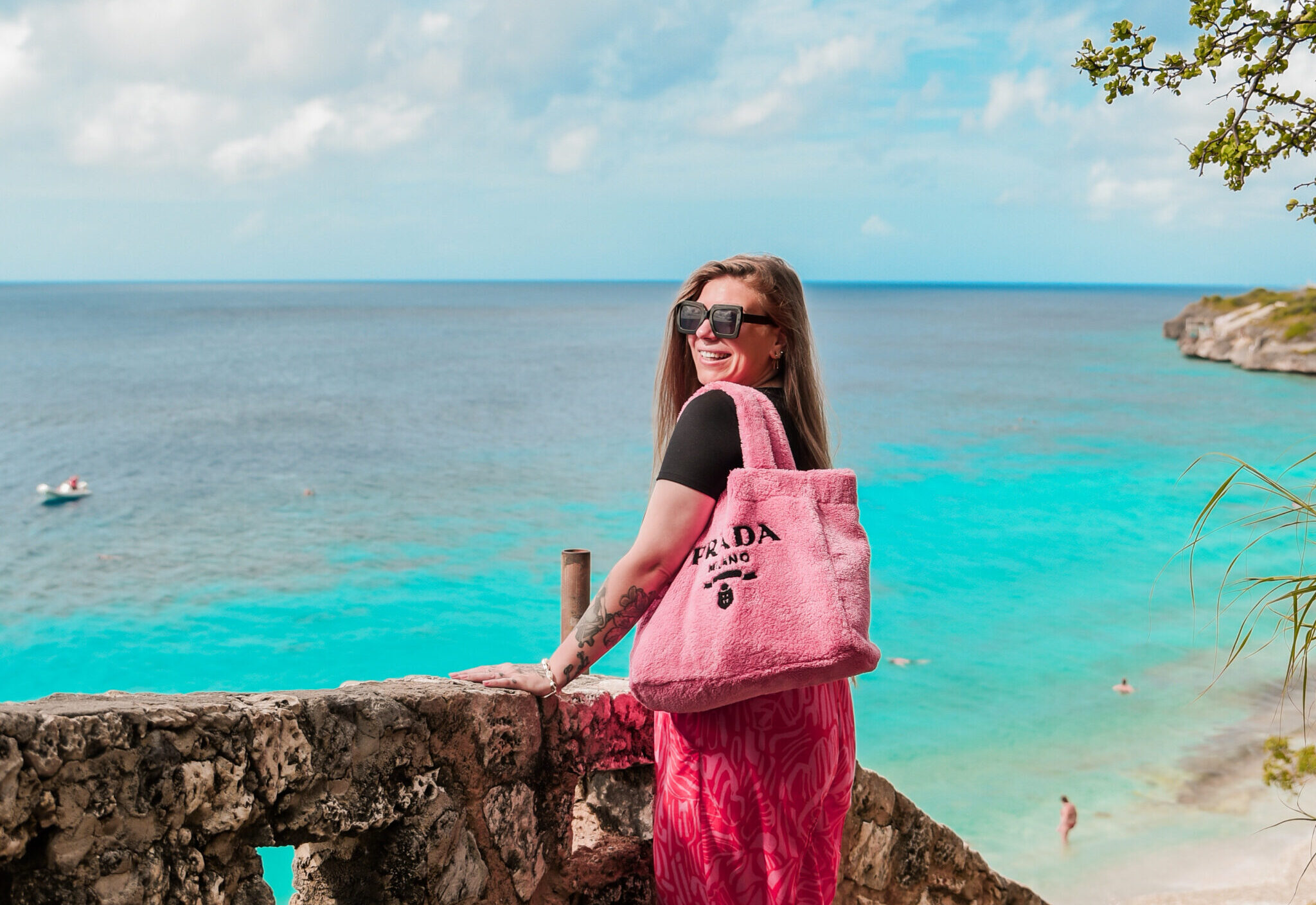
Kiki Multem Bio
My name is Kiki Multem and I have been living on Bonaire since November 2022 with great pleasure. For my work as a travel blogger, I travel the world with a love for adventure, a passion for travel and always with a camera in my hands. My blog www.kikimultem.com is full of personal travel stories and tips. Whether you are planning a city trip to New York or a vacation to sunny Bonaire, you will find articles full of inspiration there!


